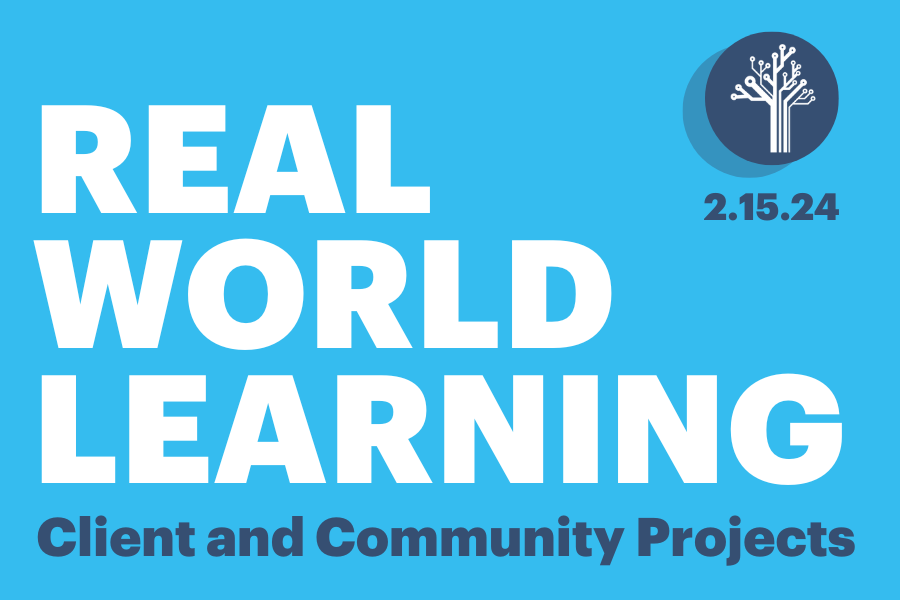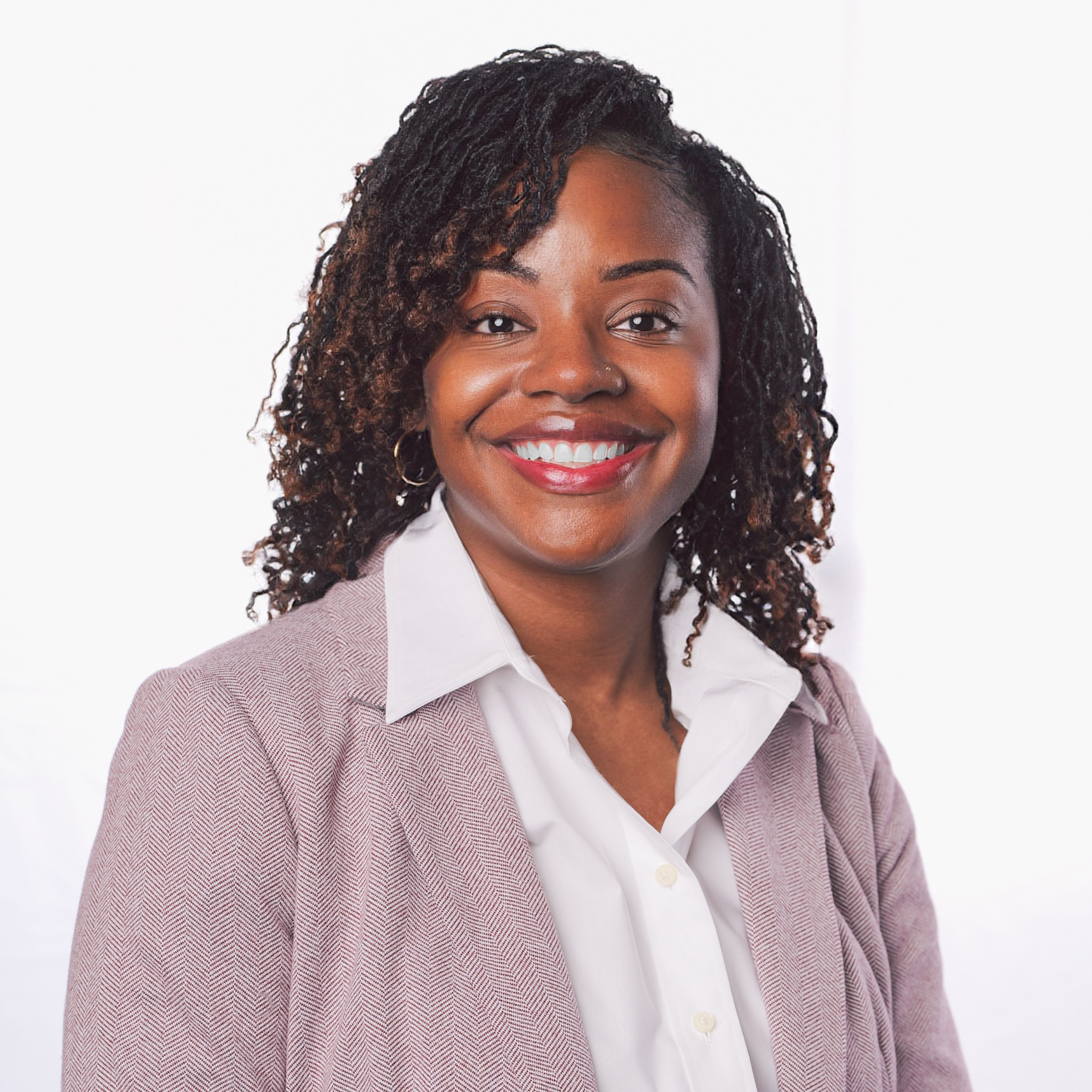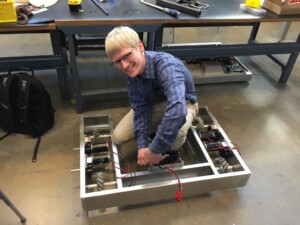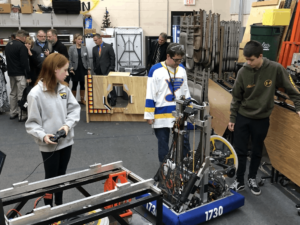Town Hall Recap: Real World Learning

Across the country, we’re seeing the rise in client-connect projects and entrepreneurial experiences — work that matters to young people and their communities. These experiences can be incredibly valuable and, with new smart tools like AI, are easier than ever to create and facilitate.
On this town hall, we were joined by a Kauffman Foundation Executive, Bill Nicely, and a Real World Learning Leader, Torrence Allen, Principal of Belton High School. Both Torrence and Bill are key parts of Kansas City’s Real World Learning project and they joined us to discuss their incredible regional work around these valuable learning experiences.
Recording
Slide Deck
Annotated and Adjusted Transcript
This transcript has been edited for reading clarity and amended to more succinctly convey the lessons learned from the Town Hall. For the full conversation, we recommend you watch the recording above.
Shawnee Caruthers: Welcome, everyone. Thank you all for being here to discuss client-connected projects. We’ll be exploring a variety of examples, primarily focusing on the exciting developments in Kansas City, Missouri. I’d like to introduce Bill Nicely from the Kauffman Foundation. Our discussions often revolve around engaging learners in meaningful work. Through our collaboration with the Kauffman Foundation in Kansas City, and under Bill’s leadership as the educator in residence, we’ve witnessed significant advancements for students across multiple districts and states, ensuring equitable high school experiences. Bill, please share with us about real-world learning.
Bill Nicely: I’d like to acknowledge Donna McDaniel and Dr. Todd White, esteemed educators in Kansas City, for their pivotal roles in this initiative from the start. Donna, previously the director of Blue Valley CAPS, highlighted the importance of impactful learning experiences, now termed market value assets by our colleague Susan Wally, who leads the intermediary organization PrepKC. This initiative underscores the remarkable effect of these experiences on students, promoting the idea that if these opportunities benefit some, they should be accessible to all, leading to the Real World Learning initiative with Kauffman Foundation support. This collaborative effort among school districts, initiated around 2018, gained momentum when the pandemic fostered essential collaboration, enhancing our progress.
The advent of the pandemic accelerated our collaboration, proving instrumental in advancing our goals. We focus on various market value assets, including work-based experiences, client-connected projects, internships, entrepreneurial experiences, industry-recognized credentials, and college credit. Our ambition is clear: by 2030, every high school student will graduate with at least one substantial experience, underscoring our commitment to the principle that “all means all.”
Initially, we questioned how many school districts, diverse in size and demographics, would engage in this work. Contrary to modest expectations, sixteen districts initially joined, a number that has since grown, demonstrating the initiative’s appeal and potential to impact over 89,000 students across a multi-county service area. This collaborative effort required scaling and adapting to fit the unique needs and capacities of each district, emphasizing the power of collective action.
Last year alone, 20,000 students earned a market value asset, with nearly half of our graduates achieving this milestone. This achievement underscores the versatility and adaptability of market value assets, catering to a wide range of interests and capabilities. Furthermore, it highlights the essential role of collaboration among districts to share experiences, learn from each other, and collectively enhance the educational landscape.
Client-connected projects, in particular, have demonstrated remarkable scalability and the ability to bridge gaps, ensuring accessibility for all students, including those facing barriers such as financial constraints or transportation issues. This adaptability and inclusiveness are what make the Real World Learning initiative not just a program, but a movement towards a more equitable and effective education system.
Tom Vander Ark: Thank you, Bill. I want to recognize Donna McDaniel’s leadership in fostering community agreements on essential experiences for students, making your region unique in valuing entrepreneurial experiences. We’re showcasing some client-connected projects, including an exceptional culinary program at Shawnee Mission, illustrating the integration of real-world learning into various educational settings. Bill, could you elaborate on what defines a client-connected project?
Bill Nicely: Certainly, Tom. Client-connected projects are distinguished by authentic tasks and tools, requiring engagement with external businesses or organizations to solve real problems. This interaction fosters significant adult mentorship outside students’ usual circles, introducing them to the professional world. Such projects are not limited to businesses but include civic and nonprofit organizations, enhancing community connections and value delivery. By embedding these projects across disciplines, we ensure broad access to meaningful, authentic work experiences, underpinning our mission of equitable and inclusive education.
Exemplary Schools
Shawnee Caruthers: Adding to Bill and Tom’s points, it’s crucial to understand that client-connected projects are not exclusive to a subset of students. For instance, at RayPec, students from various backgrounds, including college-bound, entrepreneurial, and special education, collaborate on projects, reflecting a comprehensive approach to education that transcends traditional boundaries. This inclusivity ensures all students benefit from real-world learning, supporting their academic and professional growth.
Bill Nicely: Emphasizing the accessibility of client-connected projects, they serve as an excellent entry point for educators across all subjects to introduce students to real-world professional skills. This approach encourages teachers to experiment and learn from the experience, fostering a culture of innovation and continuous improvement within the educational community.
Tom Vander Ark: Adjacent to Kearney, where Bill used to lead schools, is Liberty High School, which, in addition to offering career pathways, has established a microschool focused on the global UN Sustainable Development Goals (SDGs). The majority of projects at this school are designed with the SDGs in mind, showcasing an excellent in-school micro-model that demonstrates the potential of such initiatives. Nearby, North Kansas City’s four comprehensive high schools introduced career pathways during the pandemic, an extraordinary achievement that has seen great success. Every student in every high school is now engaged in client-connected projects within their pathway. Todd, could you share your insights on this, especially considering your leadership role and your son Drew’s significant contributions to North Kansas City’s transition?
Todd White: Thank you, Tom. One notable achievement by North Kansas City, led by Superintendent Dr. Chad Sutton, was implementing this initiative across all four high schools. Often, such projects start as pilots, but North Kansas City’s comprehensive approach underscores the effective collaboration with partners like ConnectEd and Getting Smart, ensuring robust professional development and embedding real-world learning opportunities for students. This initiative’s success in North Kansas City, anticipated to extend to Belton soon, highlights the importance of leadership in fostering educational innovation.
Tom Vander Ark: The mantra “all means all” truly reflects the excellent work being done across the state line. A prime example is the Innovation Academy at Basehor-Linwood, which began as a program for juniors and seniors and has now expanded to include freshmen. In a noteworthy project, 45 freshmen collaborated with the city on designing and naming a city park, illustrating the innovative potential of school-within-a-school models.
Shawnee Caruthers: Leadership is crucial for the Real World Learning initiative’s success. It began with superintendents reaching a common understanding, but it depends on the involvement of principals and other instructional leaders. Under the guidance of Donna and Bill, we’ve engaged principals in a fellowship to explore real-world learning for their buildings, focusing on change management, capacity building, and logistical adjustments to facilitate student access to market value assets. Torrence Allen from Belton High School will discuss the achievements in Belton, a single high school district in South Kansas City.
A Leader’s Perspective
Torrence Allen: Good afternoon, I’m the principal at Belton High School. Transitioning from another school with real-world learning experiences, Belton has embraced the Next Generation Learning community model in collaboration with Ford NGL. Our Freshman Academy is a cornerstone, guiding students through seminar classes to choose their future academy and pathway. We recently celebrated our students’ academy selections with a special ceremony. Belton offers academies in business and technology, human services, and science and industry, constantly developing our pathways. Our approach begins with an ice cream social to build relationships, followed by a commitment ceremony, career fair, and business round tables, allowing students to explore careers and pathways. Last year, our students participated in over 70 client-connected projects, earning significant dual credit hours and industry-recognized credentials, supported by dedicated academy directors and coordinators.
Tom Vander Ark: Torrence, can you specify the nature of these client projects? Are they typically individual or team efforts?
Torrence Allen: Most projects are individual, with some team projects in areas like architecture and construction, reflecting the diverse opportunities for real-world learning.
Tom Vander Ark: Bill, what’s your perspective on the balance between individual and team projects?
Bill Nicely: It varies, catering to what works best for each teacher and student group. The key is maintaining a strong mentor connection, especially in larger groups, to ensure students have meaningful interactions with adult mentors beyond graduation.
Tom Vander Ark: Torrence, Ronnie was curious about how you manage to track all these client-connected projects at Belton.
Torrence Allen: Fortunately, we have an Academies Office. Our Academies Project Coordinator and Director oversee the tracking of all projects, funneling them through their office. This task would be daunting without a dedicated coordinator or director.
Shawnee Caruthers: I’d like to add that these tracking systems are often custom-built to integrate with the learning management systems in use. It’s crucial to adapt and tailor these systems to meet our specific needs.
Tom Vander Ark: Bill, during our visit to Kearney, we noticed advisory teachers were instrumental in ensuring each student had client projects and other learning experiences planned for the next year. This data tracking, coupled with the advisory teachers’ efforts, ensures a smooth integration of these experiences into students’ educational pathways, doesn’t it?
Bill Nicely: Absolutely, it’s been remarkably smooth. Some districts, like Kearney, have made market value asset experiences a graduation requirement. This means students must complete at least one such project to qualify for an elevated diploma level. The course of study handbook, used for enrolling in courses, marks those offering client-connected projects or other market value asset experiences. The Ewing Marion Kauffman Foundation supports this through a data collection consultant, ensuring we gather comprehensive demographic data and provide timely feedback to districts. This helps ensure equitable access to these opportunities for all students.
Tom Vander Ark: The collaboration we’ve witnessed among the 35 system heads, extending to principals and teachers, is unprecedented. It fosters a collegial atmosphere conducive to shared learning and growth. Torrance, James asked about the onboarding process for client projects compared to internships. Would you say it typically requires less onboarding?
Torrence Allen: Yes, primarily because students access these projects through their career pathways, which include vetting processes. We ensure students are academically prepared before allowing external engagements, prioritizing their classroom responsibilities.
Tom Vander Ark: On a visit to another ConnectED school in San Diego, Shawnee and I saw an innovative practice where juniors were paired with industry mentors as part of their onboarding for internships, blending mentorship with preparation for success in both client projects and internships.
The first high-quality internship preparation I saw was at Blue Valley CAPS, under Donna’s guidance, where students were preparing for interviews and learning job skills. CAPS has become a national, even global, leader in preparing students for real-world learning, including client projects and internships.
Donna McDaniel: That’s right, Tom. The influence of CAPS has grown to include over 100 facilities and 200 districts globally, serving as a launchpad for real-world learning experiences.
Tom Vander Ark: Bill, let’s wrap up just by talking about summer experiences. Kauffman has created this great opportunity called ProX which includes internships and client projects — how’d that go last summer?
Bill Nicely: Really well, and we’re scaling up to be even larger this summer. We’re working to scale change around these market value assets. But let’s also target the students that need it the most, those students that could benefit most from a paid internship. We should have about a thousand students this summer. Business partners come in and they work with students for five weeks, providing opportunities for them to have an actual, valuable internship. They’re then paid for their time and those dollars are supported by the Kauffman Foundation. And in addition to that, they’re provided professional development one day a week around job skills, talents, and professional skills. We partner with the DeBruce Foundation who has done a great job of helping students understand what their skills are. Then the entire thing culminates in a pitch contest. It’s amazing to see
Additional Voices of the Real World Learning Ecosystem
Tom Vander Ark: Brian Crouse from the Missouri Chamber has been a staunch advocate for business involvement in real-world learning across the state, highlighting the importance of these experiences in developing students’ professional skills and enhancing economic talent development.
Brian Crouse: The Chamber views these client-connected projects as vital for economic and talent development, emphasizing the soft skills students gain through professional interactions, which are crucial for their future success.
Bill Nicely: It’s essential to recognize the growth students experience through these real-world learning opportunities. We’ve identified key skills, or “outgrowths,” that students develop, fundamentally changing their perspectives and capabilities.
Mary Esselman: At Operation Breakthrough, located in Kansas City’s urban core, we offer diverse programs that include entrepreneurial pathways and credentials. Our upcoming industry breakfasts aim to expand client-connected projects and internships, showcasing our commitment to innovative real-world learning.

Shawnee Caruthers







0 Comments
Leave a Comment
Your email address will not be published. All fields are required.